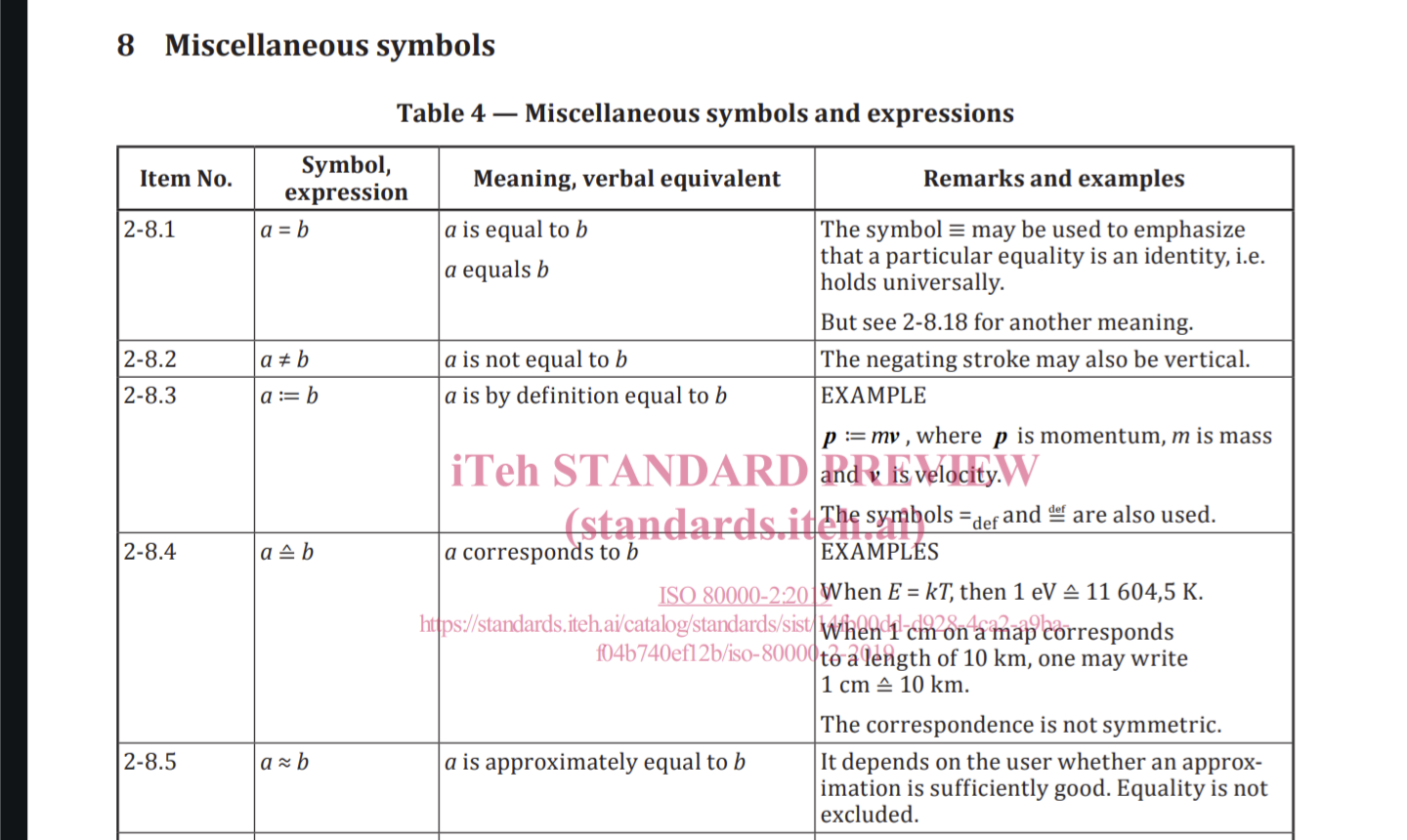Sure! See ISO-80000-2
Here’s a link: https://cdn.standards.iteh.ai/samples/64973/329519100abd447ea0d49747258d1094/ISO-80000-2-2019.pdf

Sure! See ISO-80000-2
Here’s a link: https://cdn.standards.iteh.ai/samples/64973/329519100abd447ea0d49747258d1094/ISO-80000-2-2019.pdf

“Approximately equal” is just a superset of “equal” that also includes values “acceptably close” (using whatever definition you set for acceptable).
Unless you say something like:
a ≈ b ∧ a ≠ b
which implies a is close to b but not exactly equal to b, it’s safe to presume that a ≈ b includes the possibility that a = b.
Say it with me:
Fluor-een Chlor-een Bro-meen Ala-deen
It’s a definition from a well-respected global standards organization. Can you name a source that would provide a more authoritative definition than the ISO?
There’s no universally correct definition for what the ≈ symbol means, and if you write a paper or a proof or whatever, you’re welcome to define it to mean whatever you want in that context, but citing a professional standards organization seems like a pretty reliable way to find a commonly-accepted and understood definition.